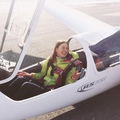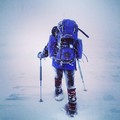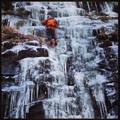“...at 12:20 pm April 26 2010, Nepal time a small serac in the middle section of the North Col route collapsed sending down ice debris across about a 30m front.
Unfortunately two climbers were struck, the fixed ropes for 30m-50m pulled out and one was swept downslope into a crevasse which was then filled in with ice debris...”
Jamie McGuinness
“I hope I’ll be able to sing ‘there’s nothing above me but clear skies’”
This is how László Várkonyi said good bye in a message sent before leaving for Everest. A week ago he called from the Base Camp at 5300 metres on Mount Everest, saying that he would disappear for some time.
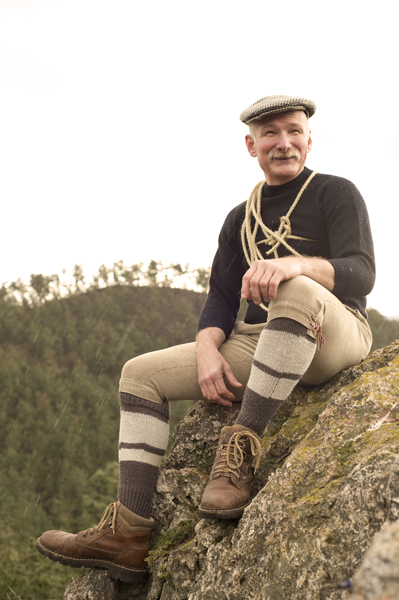 He had climbed many 7000-metre and 8000-metre peaks – he would gently reject the word “conquered”. He had visited Everest, the tallest peak on Earth eight times. Now, after the eighth time, he remains there forever. The only Hungarian to have climbed 8750 metres without using supplementary oxygen. He did not want to use cylinders of oxygen as it was against his ethics, against his view of clean climbing. Konyi possessed very rare genetic abilities: he could survive several days in a row at 8600 metres, the so-called death zone. For instance two years ago, when his climbing partner, Dávid Klein turned back, he stayed alone at 8600 metres for two days, as he was certain he had a chance at summiting. He had exceptionally sensitive radars to judge changes in the weather, snow conditions, and the terrain, and eventually concluded that a safe return could not be guaranteed if he was to reach the peak.
He had climbed many 7000-metre and 8000-metre peaks – he would gently reject the word “conquered”. He had visited Everest, the tallest peak on Earth eight times. Now, after the eighth time, he remains there forever. The only Hungarian to have climbed 8750 metres without using supplementary oxygen. He did not want to use cylinders of oxygen as it was against his ethics, against his view of clean climbing. Konyi possessed very rare genetic abilities: he could survive several days in a row at 8600 metres, the so-called death zone. For instance two years ago, when his climbing partner, Dávid Klein turned back, he stayed alone at 8600 metres for two days, as he was certain he had a chance at summiting. He had exceptionally sensitive radars to judge changes in the weather, snow conditions, and the terrain, and eventually concluded that a safe return could not be guaranteed if he was to reach the peak.
He is probably the only Hungarian mountaineer to have attempted Chomolungma solo on multiple occasions. News of this even spread among the Sherpa, when he covered 120 kilometres in three days from Kathmandu on foot, carrying a 50-kilo backpack. He had a legendary reputation at Everest base camp where members of a unique multinational society assemble. Konyi was considered one of the toughest men. Over the span of a 35-year climbing career he met all great mountaineers in person. He knew Messner, Kammerlander and Piotrowski personally.
When he went alone to Everest, he could not carry enough food. However, the previous year he stashed the leftover provisions from an earlier expedition (1.5 tonnes of ham and other canned food as well as three hundred metres of rope) in a crevasse. The carefully hidden reserves of food were the guarantee for the expedition, a month-long project he could have not otherwise accomplished solo. He reached the bottom of the second step, 8600 metres. He was completely alone on Everest above 7800 metres for two days. There was so much snow that there was nobody else in the summit region. He said that he is never afraid in the mountains, he has never panicked. In truth, he had never really been in danger so far, save for once. After summiting solo, he was descending Huascaran in Peru at dawn, and at 4000 metres was followed by a pack of roughly forty growling dogs. Konyi juggled an ice axe and a stone to deter the dogs from attacking him.
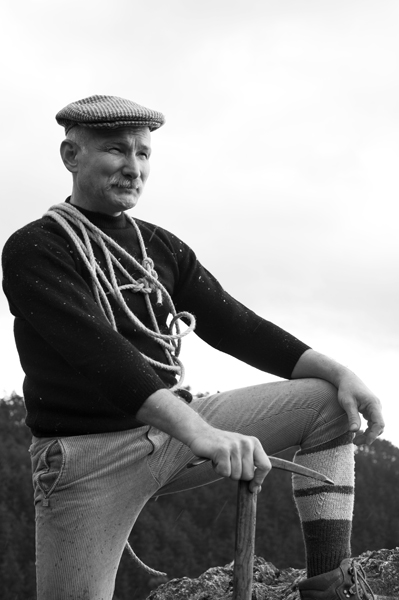 In 2009 on Mont Blanc, the petroleum tank of Krisztina’s stove did not open. No one could open it, not even Gábor, despite being 90 kilos of pure muscle. Konyi took the bottle and disappeared. Not even a minute had passed, when he returned and passed it to me. So that I could reap all the applause. It opened. Of course it did, as before giving it to me he had fabricated a clamp out of slings that had opened the bottle.
In 2009 on Mont Blanc, the petroleum tank of Krisztina’s stove did not open. No one could open it, not even Gábor, despite being 90 kilos of pure muscle. Konyi took the bottle and disappeared. Not even a minute had passed, when he returned and passed it to me. So that I could reap all the applause. It opened. Of course it did, as before giving it to me he had fabricated a clamp out of slings that had opened the bottle.
He dismantled everything to the smallest part; he dissected telephones and computers to learn about their internal workings. When he arrived in the Everest base camp, he was the guy to take generators to for fixing as he was skilled at soldering and repairing things. While in camp, he fixed battery chargers, welded, and even sew together broken plastic or metal using “technical stitches”. He was familiar with all technologies and could tinker astonishing things. If required, he could manufacture carbon shoes from a mixture of resin and carbon fibre.
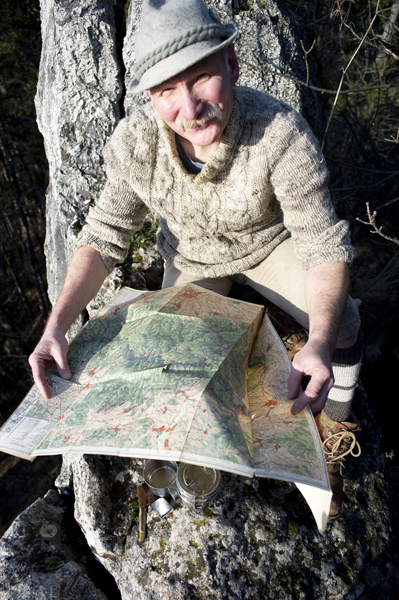 Or when we had been on foot for 18 hours and everybody was ready to collapse from fatigue, he would also carry a partner’s backpack, while recounting story after story in the pouring rain to cheer us up.
Or when we had been on foot for 18 hours and everybody was ready to collapse from fatigue, he would also carry a partner’s backpack, while recounting story after story in the pouring rain to cheer us up.
He climbed a bit with them, after which he returned home. He has been living in the mountains ever since, even when residing in his house in Budapest, filled to the brim with “junk”. There are no gadgets – honest – of which he did not have one, often two, at home. He was often ticketed for not knowing the rules of the city. He would forget to switch on the car’s headlights as he would not use a light at full moon when he could see perfectly. After completing a mountain trail and memorising all rocks and landmarks, he could at any time “blindly” follow it again, in the dark if needed. This was also what often helped him in returning from the mountains, even in fog or winds up to 100 km/h.
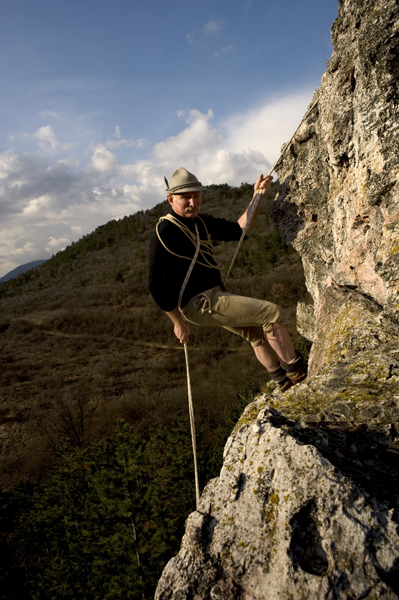
What does it mean a standstill river
What's a lake that fails to quiver
And the wind that doesn't blow
It means they live no more
Like a motion that has stopped in the air
Like a road that never leads anywhere
Like a waterfall that dies in the frost
If I don't go I am lost
I'd be the grass that grows everywhere
For your breath how I would be the fresh air
I'd be the word to get to you alone
A guiding hand when you're old
Were I a dance that spins round and round
The heart of the Earth would start to pound
In this heart let I be the bloodWho always moves and never stops
[Originally posted in Hungarian by Anikó Molnár at http://salamandra.blog.hu/2010/04/30/bucsu_konyitol_aki_most_mar_mindig_velem_lesz]"
Konyi (VÁRKONYI LÁSZLÓ) was one of the most successful and most experienced Hungarian expedition mountaineers, holding the Hungarian record for climbing without supplementary oxygen (in the spring of 2002 he reached 8750 metres on the normal route of Everest on the Nepal side, where he had to turn back due to the weather).
Born in 1956, he started climbing mountains in 1971, at the age of 15. He roamed the High Tatras, the Caucasus, the Pamir, the Andes and the Tian Shan-t before turning towards eight thousand metre peaks. He took part in expeditions to three eight-thousanders, two of which he summited.
His major expeditions:
1978 Caucasus expedition – Elbrus (5642 m), and several other peaks above 4000 metres
1981 Peak Lenin (7137 m)
1982 Mongolia expedition – successful traverse of 4 peaks above 4000 metres in the Mönch Hairchan Mountains
1983 International Pamir Camp – crossing the Communism plateau to Dushanbe (~6500 m)
1984 Aconcagua (6989 m) – first Hungarian ascent of the mountain
1987 Andes expedition – first Hungarian ascents and summiting five 5800-6800 m peaks
1987 Shisha Pangma (8014 m) – climbed to summit (first Hungarian eight-thousander)
1990 Cho Oyu (8201 m) – climbed to summit
1996 Mount Everest (8850 m) – reached Camp 2 on the Northern side without the use of supplementary oxygen, 7800 metres
1999 Mount Everest – reached 8650 metres
2000 Mount Everest – reached 8400 metres
2001 Mount Everest – Everest-Lhotse expedition – from the East (Kangshung Face) – the expedition set a new variation of a route on the rarely climbed East Face of Everest, but they were forced to turn back due to avalanche risk
2002 Mount Everest – he attempted the summit of Everest without the use of supplementary oxygen on the normal route in Nepal, and reached 8750 metres, thereby setting the Hungarian record to date for climbing without supplementary oxygen
2003 Gasherbrum II (8035 m) – reached 8005 metres without the use of supplementary oxygen
2007 Mount Everest – reached 8600 metres without the use of supplementary oxygen on the North Ridge in Tibet
2008 Mount Everest (from Nepal) – despite the limits imposed on climbing due to the Olympic Torch being carried to the summit, he reached 7950 metres, the South Col without the use of supplementary oxygen
He was a mountaineering trainer and alpine instructor.
Awards: Ödön Téry medal, The Knight's Cross of the Order of Merit of the Republic of Hungary, Sports Medal of Merit - gold.
He is survived by his wife, Bea, an accomplished climber herself, and their two teenage children.
A bejegyzés trackback címe:
Kommentek:
A hozzászólások a vonatkozó jogszabályok értelmében felhasználói tartalomnak minősülnek, értük a szolgáltatás technikai üzemeltetője semmilyen felelősséget nem vállal, azokat nem ellenőrzi. Kifogás esetén forduljon a blog szerkesztőjéhez. Részletek a Felhasználási feltételekben és az adatvédelmi tájékoztatóban.

